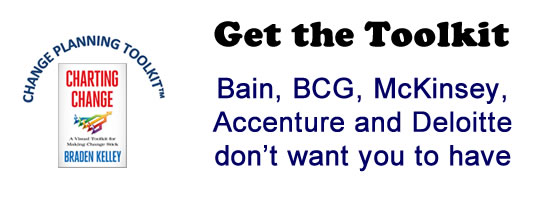Why Your Idea is Not Investor-Ready

In my role as the President and CEO of the Society of Physician Entrepreneurs (SoPE), I sometimes receive inquiries like this: “Hi, Dr. Meyers. I was reading some of your posts on the SoPE website and social media, and was wondering if you wouldn’t mind taking time to read the enclosed business plan for an idea I have and whether you could give me some advice on where to find investors.†In most instances, the information that I receive is not investor-ready and typically contains the following errors written by biomedical and health entrepreneurs trying to commercialize an idea, invention or discovery. They are:
1. People describe ideas that have not been reduced to practice. There is a big difference between an idea, an invention and an innovation. An idea is something that pops into your mind and stays there. It is a prisoner, never to escape or otherwise see the light of day, let alone a customer. An invention, on the other hand, is an idea reduced to practice. It can be sketched on the back of a napkin, a prototype made of Styrofoam and duct tape or a YouTube video describing your digital health product. An innovation has both a qualitative and quantitative component. It is a new way of doing something, possibly using old things in a new way that result in at least ten times the value of existing competitive offerings. Anything short of that is an improvement or, worse case, a solution looking for a problem.
2. They are not clear whether they have a technology, a product or a business. A product is something customers will buy that solves their problem. A start-up is an entity looking for a scalable and profitable business model. Like a child is not a small adult, a start-up is not a smaller version of an ongoing business.
3. They ask for money to make a product or do research. Investors give money to make money as soon and as risk-free as possible. They are not interested in giving you money to do research, pay your salary or buy an office. They want you to use their money to validate a business model that can be scaled to create profits as quickly as possible. They don’t support science projects.
4. They do not have a business, let alone a business model. A for-profit business is an organizational entity designed to offer products at a profit. The business model describes how the business will create, deploy and harvest value. Several businesses sell one or a few products; however, there are not many. Most have to expand their product lines eventually, capture new markets and adapt to change to sustain their growth.
5. Most don’t have a validated business model, i.e., early adopters or customers. Technological products require not just technical validation (Will it work the way it should and the way customers want it to?), but clinical validation (Will it do what we say it will do and be safe?) and ultimately commercial validation (Will the dog eat the food?).
6. Their proposal is not investor ready. Less than 0.5 percent of venture pitches will get funded because the presentation is not formatted correctly, the information is not appropriate or focuses on the wrong things, the opportunity is not big enough or profitable enough or, quite simply, what is being proposed is not technically feasible, believable or based upon valid marketing and revenue assumptions.
7. They spend 80 percent of the time talking (usually in arcane language with lots of jargon) about their solution, 15 percent of the time talking about themselves and five percent talking about the problem to be solved or the job to be done. Most doctors, engineers and scientists are preoccupied with their solution. Investors are interested in the market pain, how big it is and how much the market is likely to grow if you fill the product/market gap. In short, at this stage, you need to be a problem seeker, not a problem solver.
8. They don’t listen. If you listen long enough, patients will tell you their diagnosis. The same is true for customers. They will describe or demonstrate their pain and ask you for a solution. Don’t miss the diagnosis by listening to their chief complaint.
9. They insist they are right and are usually looking for validation of their ideas. What you think is valuable is irrelevant. The only thing that matters is what the customer values, and they vote with their wallets.
10. They have poor interpersonal, communication and selling skills. Investors bet on the jockey, not the horse. Act like you’ve been in the end zone before.
Before you ask for money, be sure you have:
1. A product
2. A patent
3. A team
4. A customer
5. A validated plan
6. A website
7. A story
8. A company
9. An executive summary
10. An exit strategy
Here are 50 questions angel investors will ask you when you make your pitch. Be sure you are ready to answer them. Also, you should do these things before announcing your fundraising round.
The information that potential investors will be answered by these questions:
- Who are you and your team and why should investors have confidence that you will succeed?
- What problem are you solving and how significant is the problem to all the stakeholders? (Use market data to develop a market model and illustrations showing the opportunity.)
- What is your solution to the problem and how will you sell it? (Describe the user experience and bring a prototype.)
- What are your clinical, regulatory, economic value and reimbursement pathway plans, if applicable?
- How is your approach creative or original vs. competition and how will it be protected by intellectual property?
- How will you grow the venture and value vs competition over the long term?
- What is your exit strategy?
- What funding are you seeking?
The bottom line IS the bottom line. For investors, and for your sake and the people you hire, you need to answer three basic questions about revenue and profit:
- How? HINT: By creating the right product-market mix
- How much? HINT: By sizing the market
- How soon? HINT: By creating a high revenue, low cost business model canvas and scaling it
Do me a favor, please. Before you send your idea to someone for input, be sure you’ve done your homework and have a proposal that is ready for prime time. Focus on the problem, not the solution. Create a business model that you can test and then validate. Don’t ask for money too soon. Practice your communication skills in order to tell your story in as short a period of time as possible, using language that a sixth grader could understand. (The Wall Street Journal uses language at a sixth grade reading level.)
Finding startup money is painful. So, take these pain relievers and use your patient portal to send me an mail in the morning.
If you can’t, then kill the idea, save us both time and move on to the next. Good luck with your new venture.
Wait! Before you go…
Choose how you want the latest innovation content delivered to you:
- Daily — RSS Feed — Email — Twitter — Facebook — Linkedin Today
- Weekly — Email Newsletter — Free Magazine — Linkedin Group
 Arlen Meyers, MD, MBA is the President and CEO of the Society of Physician Entrepreneurs at www.sopenet.org
Arlen Meyers, MD, MBA is the President and CEO of the Society of Physician Entrepreneurs at www.sopenet.org
NEVER MISS ANOTHER NEWSLETTER!
LATEST BLOGS
Three things you didn’t know about credit cards
Photo by Ales Nesetril on Unsplash Many of us use credit cards regularly. From using them for everyday purchases to…
Read MoreFive CV skills of a business-minded individual
Photo by Scott Graham on Unsplash The skills listed on a CV help employers quickly understand your suitability for a…
Read More


